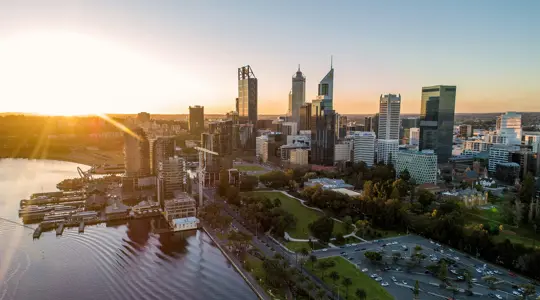Australia and New Zealand market intelligence: infrastructure investment supports construction outlook
Our latest report highlights that both Australia and New Zealand’s construction sectors are facing economic challenges, including changing interest rates and global uncertainty. While Australia is seeing growth in public infrastructure, energy and housing, New Zealand’s market is stabilising due to easing cost pressures and stronger policy support.
Public sector investment underpins Australia’s construction growth
Australia's economy expanded by 0.2 percent in the March quarter. It increased by 1.3 percent over the year, which was short of market expectations. Public spending recorded its largest negative impact on growth since the September quarter of 2017. At the same time, extreme weather disrupted mining, tourism and shipping.
Public investment declined as major infrastructure projects concluded and delays affected new developments. Rising geopolitical tensions in the Middle East have added to global uncertainty, raising concerns over oil supply and inflation.
Construction activity across Australia remains broadly consistent with previous quarters. Public spending is still supporting growth in most markets. A rise in health-related investment is driving a short-term increase in activity. A shift is emerging in the non-residential private sector: industrial development is moderating, and data centres remain strong.
Looking ahead, energy and utilities projects are expected to dominate the construction pipeline by the end of the decade. This is particularly due to a greater policy certainty around net-zero commitments following the federal election. The outlook remains positive, particularly in regional areas and infrastructure-linked segments.
Elevated construction costs remain challenging in New Zealand
New Zealand’s economy expanded by 0.8 percent in the March 2025 quarter. This outperformed market expectations and marked the second quarter of growth in a row. Although annual GDP contracted by 0.7 percent, the quarterly trend indicates a slow recovery is in progress.
The Reserve Bank of New Zealand (RBNZ) has signalled a slightly deeper policy easing cycle than projected three months ago. They’re concerned about increased economic risks from global challenges.
The RBNZ owered the Official Cash Rate to 3.25 percent in May 2025. This decision aligned with expectations to boost economic activity at a time of subdued growth and declining inflation. Elevated construction costs remain a challenge, but government reforms, infrastructure investment and interest rate reductions offer stability.
Demand for affordable housing and urban growth drive residential construction. Office refurbishments are rising in Auckland, while school projects and housing plans are being reassessed. While construction activities face challenges, policy adjustments and targeted sector investments should help improve market conditions in the near future.
Read the report


